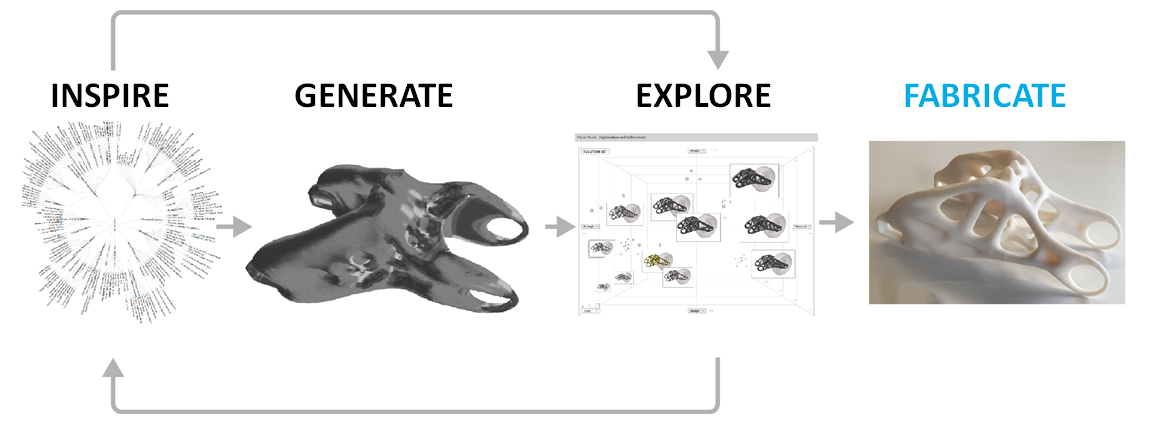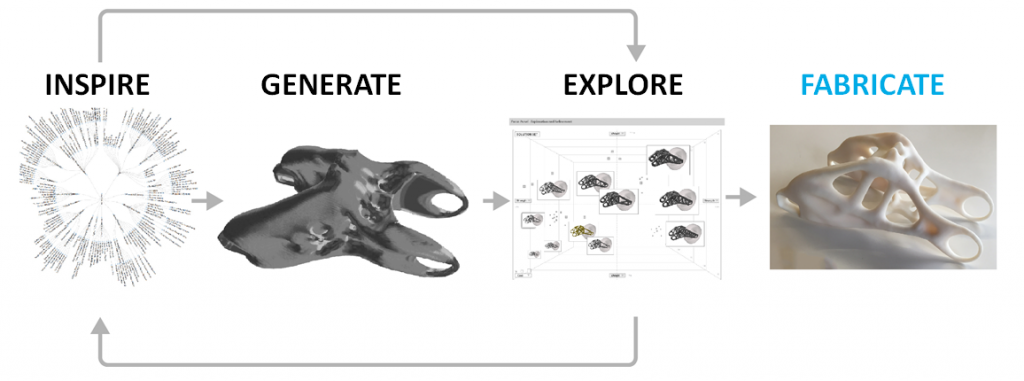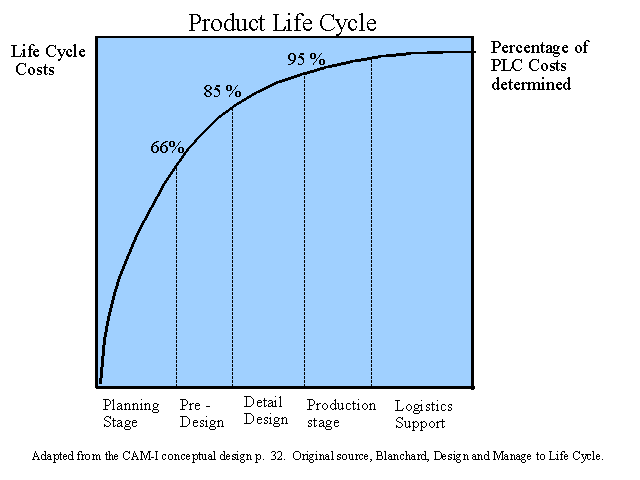Autodesk Research Project Dreamcatcher: Pushing the Limits of Generative Design

Dreamcatcher workflow. Source: Autodesk
September 2, 2015
 Bruce Jenkins, president of Ora Research.
Bruce Jenkins, president of Ora Research.Commentary by Bruce Jenkins, President, Ora Research
Project Dreamcatcher is Autodesk Research’s initiative to explore and expand the limits of generative design through the power of cloud computing, natural-language input, pattern-based problem description and AI-assisted design space visualization. Describing Dreamcatcher as an “experimental design platform with focused research probes into generative design systems,” Autodesk explains the spur for this work: “Recent advancements in artificial intelligence and the simulation of complex phenomena have enabled software to play an active, participatory role in the invention of form.”
 Dreamcatcher workflow. Source: Autodesk
Dreamcatcher workflow. Source: AutodeskAt first glance this may look like topology optimization meets Invention Machine, but it’s much more. A goal-directed design system, Dreamcatcher’s objectives are summarized by Autodesk:
“The Dreamcatcher system allows designers to input specific design objectives, including functional requirements, material type, manufacturing method, performance criteria and cost restrictions. Loaded with design requirements, the system then searches a procedurally synthesized design space to evaluate a vast number of generated designs for satisfying the design requirements. The resulting design alternatives are then presented back to the user, along with the performance data of each solution, in the context of the entire design solution space.”
Autodesk continues:
“Upon evaluating the progressively generated solutions, the designer is then able to return to the problem definition at any time to adjust goals and constraints to generate new results that fit the refined definition of success. Once the design space has been explored to satisfaction, the designer is able to output the design to fabrication tools or export the resulting geometry for use in other software tools.”
For users looking to Autodesk to bring new levels of usability, accessibility and democratization to design space exploration and design optimization, this raises a critical question: Is “generative design” a sufficiently expansive way to conceive the problem? In particular, will solutions resulting from this work eventually prove extensible to the multidisciplinary, multi-domain systems-level views necessary to explore and optimize the designs of complex-architecture products? A motorcycle swing-arm is one thing; a vehicle-suspension multibody dynamics problem or a hybrid-electric-vehicle powertrain is quite another.
Dreamcatcher “applies to buildings, bridges, automotive parts — everything we do where we have to draw things,” Autodesk Chief Technology Officer Jeff Kowalski has said. This points to a central, potentially self-locking consequence of Autodesk’s focus on volume-market design solutions: Any notion of “design” that starts with product geometry has, by definition, only limited reach upstream to the crucial phases of conceptual engineering where, for any product of even moderately sophisticated functional architecture, the most important engineering decisions are made based on product performance calculations, often supported by so-called lumped-parameter systems models and 0D/1D simulations — long before 3D product geometry exists.
Why this matters is made clear by any of the familiar research showing how the majority of a product’s lifecycle costs are locked in by the end of this conceptual engineering phase. By defining its target markets as mass-unit-volume and 3D-centric, Autodesk today cuts itself off from participating in the vast amounts of engineering value creation that happen before 3D geometry comes into play — and cuts off the marketplace from what Autodesk’s massive resources could contribute here.
 Source: Berliner and Brimson, eds., Cost Management for Today’s Advanced Manufacturing: The CAM-I Conceptual Design (Harvard Business School Press)
Source: Berliner and Brimson, eds., Cost Management for Today’s Advanced Manufacturing: The CAM-I Conceptual Design (Harvard Business School Press)It seems scarcely conceivable that the company will forever limit its ambitions in this fashion. In the problem domain targeted by Dreamcatcher, for instance, after the goals of this project are achieved we look forward to Autodesk Research attacking the next challenge: democratizing those aspects of design space exploration and design optimization that take place during conceptual engineering before the start of physical geometry definition.
Of course such initiatives would mean Autodesk moving beyond its current business-model imperative of products that have immediate volume-market potential, and into the upstream areas of conceptual engineering (not industrial design and styling, which is the “conceptual design” activity addressed by Fusion 360) where disproportionately large amounts of engineering value are created relative to the comparatively small unit sales potential that such tools have — in their current incarnations. Should that day come, we have every confidence that the company’s masterful strategists will prove equal to the challenge.
Bruce Jenkins is president of Ora Research, a research and advisory services firm focused on technology business strategy for 21st-century engineering practice. www.oraresearch.com.
Subscribe to our FREE magazine, FREE email newsletters or both!






